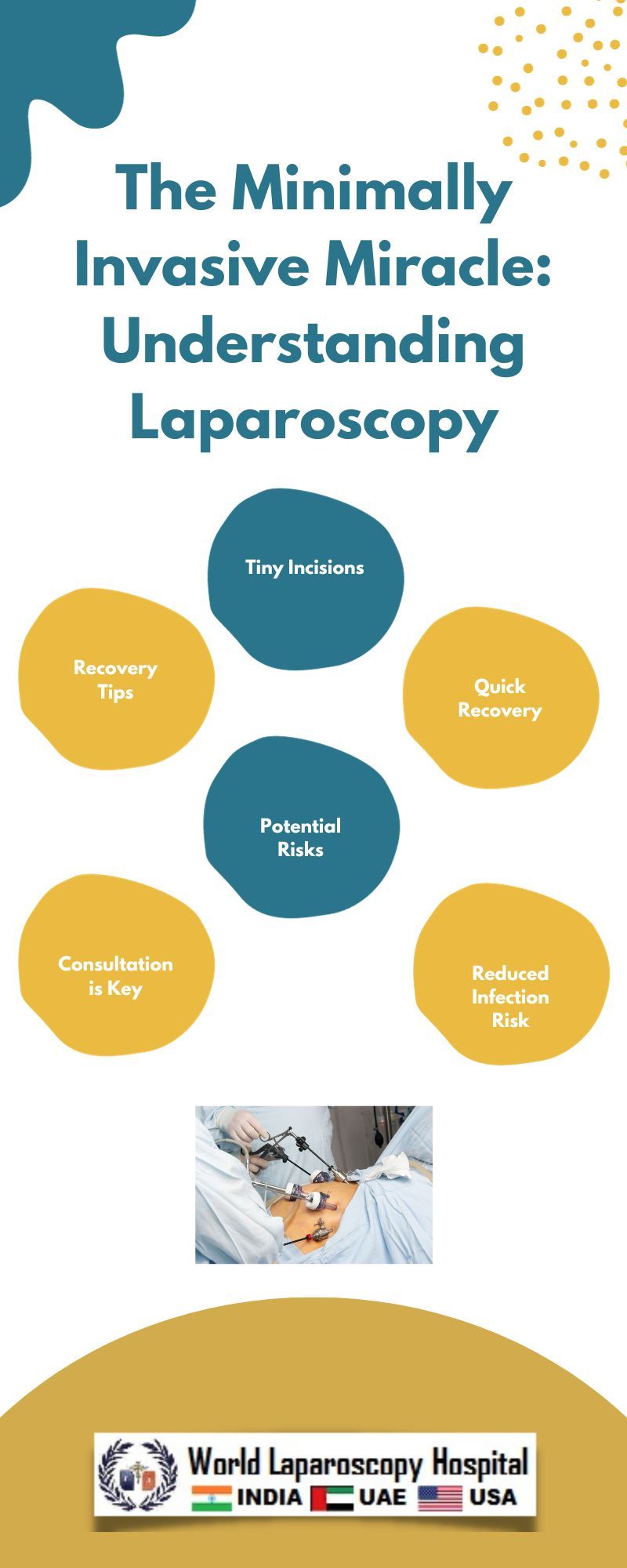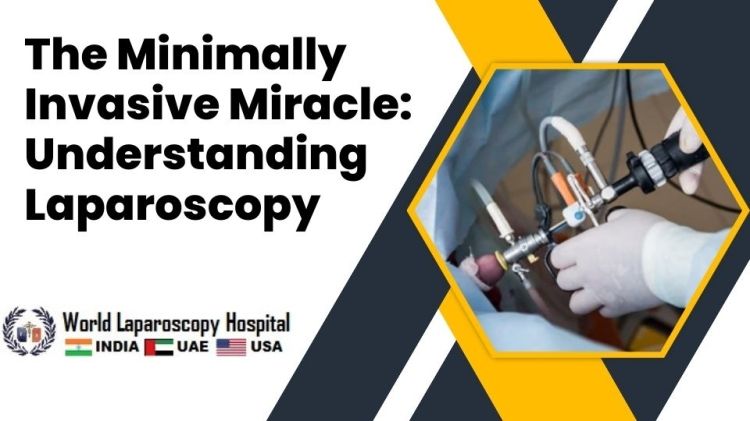The Minimally Invasive Miracle: Understanding Laparoscopy
Introduction:
In the ever-evolving landscape of medical science, innovations continually emerge to enhance patient outcomes and redefine traditional treatment approaches. One such groundbreaking advancement is laparoscopy, a minimally invasive surgical technique that has revolutionized the field of surgery. This article aims to provide a comprehensive exploration of laparoscopy, delving into its origins, techniques, applications, advantages, and future prospects.

The Genesis of Laparoscopy:
Historical Context:
Laparoscopy finds its roots in the mid-20th century when medical pioneers began experimenting with endoscopic instruments. The first recorded laparoscopic procedure was performed in 1901 by George Kelling, a German surgeon, who used a cystoscope to examine the abdominal cavity of dogs. However, it wasn't until the 1970s that laparoscopy gained prominence in human medicine.
Technological Advancements:
Early laparoscopic procedures were limited by technological constraints, but with the advent of fiber optics and video camera technology, the field experienced a paradigm shift. The development of high-resolution cameras and advanced instrumentation enabled surgeons to visualize and manipulate internal organs with unprecedented precision.
Laparoscopic Techniques:
The Surgical Setup:
Laparoscopy involves making small incisions through which a laparoscope, a thin tube equipped with a camera and light source, is inserted into the body cavity. Carbon dioxide gas is then introduced to create a workspace and facilitate a clearer view of internal structures.
Trocar Placement:
Surgeons use trocars to create entry points for additional instruments, such as graspers, scissors, and dissectors. These instruments are inserted through separate incisions, allowing for a range of movements and tasks within the abdominal or pelvic cavity.
Visualization and Instrumentation:
The laparoscope provides real-time images on a monitor, guiding surgeons through the procedure. Miniaturized instruments, manipulated by the surgeon, enable tasks like tissue dissection, suturing, and organ removal.
Applications of Laparoscopy:
Gynecological Surgery:
Laparoscopy has transformed gynecological procedures, such as hysterectomies, ovarian cyst removal, and tubal ligations. The minimally invasive nature of these surgeries reduces recovery time and minimizes scarring, making them increasingly preferable for patients.
General Surgery:
In general surgery, laparoscopy is employed for procedures like cholecystectomy (gallbladder removal), appendectomy, and hernia repair. The smaller incisions result in less postoperative pain and quicker return to normal activities.
Urological Procedures:
Laparoscopic techniques are applied in urology for surgeries like nephrectomy (kidney removal), pyeloplasty (reconstruction of the renal pelvis), and prostatectomy. These procedures offer benefits such as reduced blood loss and a shorter hospital stay.
Colorectal Surgery:
Colorectal surgeons use laparoscopy for colectomies (colon removal), rectal resections, and the treatment of conditions like diverticulitis. The approach lowers the risk of infection and accelerates the recovery process for patients.
Advantages of Laparoscopy:
Reduced Trauma:
Compared to traditional open surgeries, laparoscopy involves smaller incisions, resulting in less trauma to surrounding tissues. This minimizes blood loss, lowers the risk of infection, and accelerates the healing process.
Quicker Recovery:
Patients undergoing laparoscopic procedures typically experience a faster recovery and shorter hospital stays. The reduced postoperative pain contributes to a quicker return to daily activities and work.
Cosmetic Benefits:
The cosmetic advantages of laparoscopy cannot be overstated. With tiny incisions often hidden in natural body creases, patients are left with minimal scarring, enhancing both physical and psychological well-being.
Enhanced Precision:
The high-resolution images provided by laparoscopic cameras, coupled with specialized instrumentation, allow surgeons to perform intricate tasks with unparalleled precision. This precision is particularly crucial in delicate procedures involving organs like the heart, lungs, or reproductive organs.
Cost-Effectiveness:
While the initial costs of laparoscopic equipment may be higher, the overall economic impact tends to favor minimally invasive techniques. Quicker recovery times translate to reduced hospital stays, decreased postoperative care, and ultimately, cost savings.
Challenges and Considerations:
Learning Curve:
Adopting laparoscopic techniques requires surgeons to overcome a learning curve. Proficiency in hand-eye coordination, instrument manipulation, and 3D spatial awareness is crucial for successful outcomes.
Equipment Costs:
The initial investment in laparoscopic equipment, including high-quality cameras, instruments, and training, can be a barrier for some medical facilities. However, as technology advances and becomes more widespread, costs are expected to decrease.
Patient Selection:
Not all patients are suitable candidates for laparoscopic surgery. Factors such as obesity, extensive scarring from previous surgeries, or the nature of the pathology may influence the decision to opt for traditional open procedures.
Future Prospects:
Robotics in Laparoscopy:
The integration of robotic technology into laparoscopic procedures is an exciting frontier. Robotic-assisted surgeries offer enhanced dexterity, precision, and the ability to perform complex maneuvers with greater ease.
Continued Technological Advancements:
Ongoing advancements in imaging, instrumentation, and robotics are poised to further refine laparoscopic techniques. Innovations such as virtual reality simulations for surgeon training and augmented reality overlays during procedures are on the horizon.
Expansion of Indications:
As surgeons become more proficient in laparoscopic techniques, the range of procedures amenable to minimally invasive approaches is expected to expand. This may include more complex surgeries that were traditionally deemed unsuitable for laparoscopy.
Conclusion:
Laparoscopy stands as a testament to the transformative power of medical innovation. From its humble beginnings to the present day, this minimally invasive marvel has redefined surgical practices across various disciplines, providing patients with safer, less invasive options. As technology continues to advance, the future holds the promise of even more refined laparoscopic techniques, solidifying its place as a cornerstone of modern medicine.
